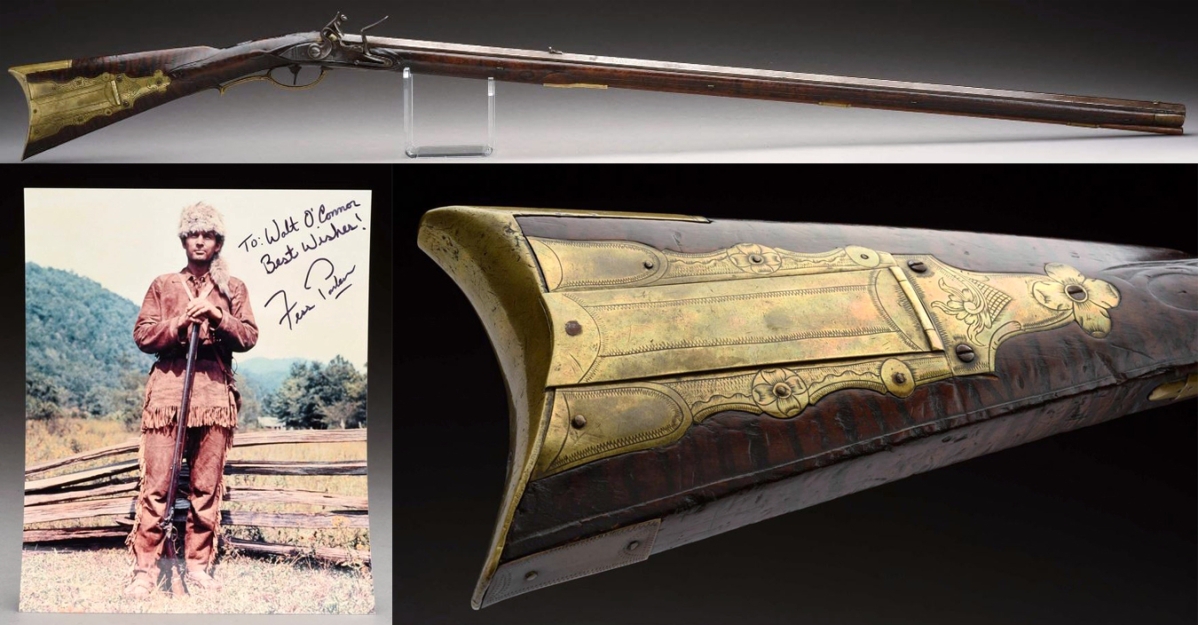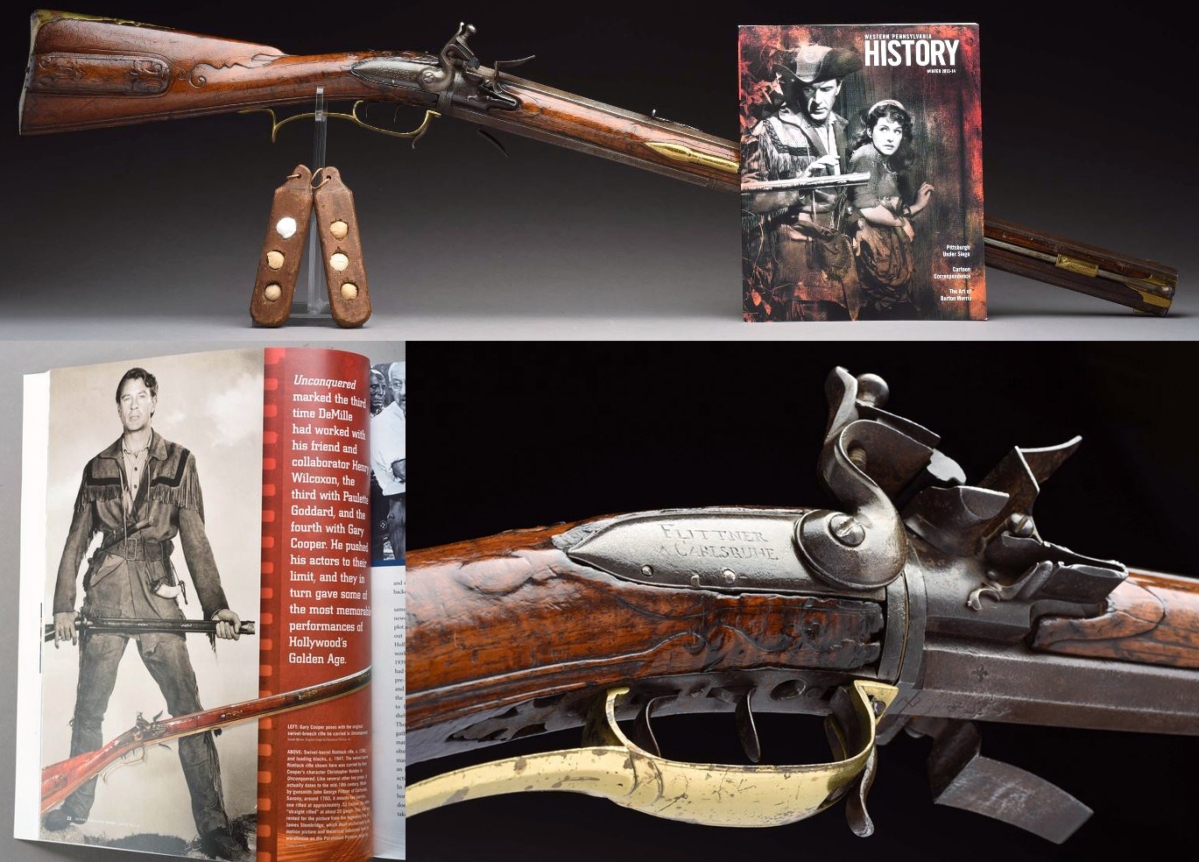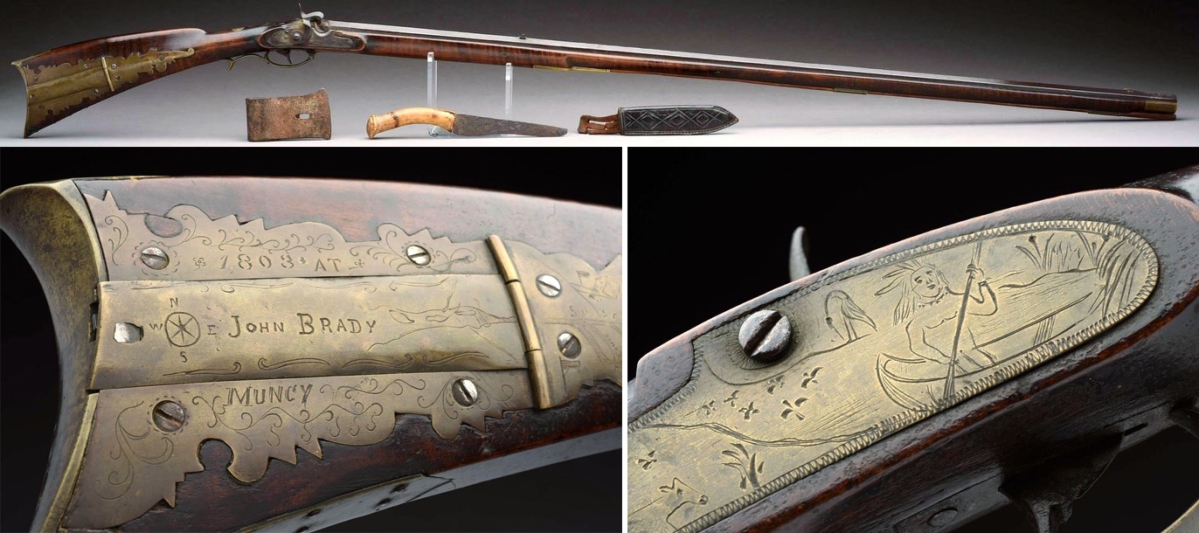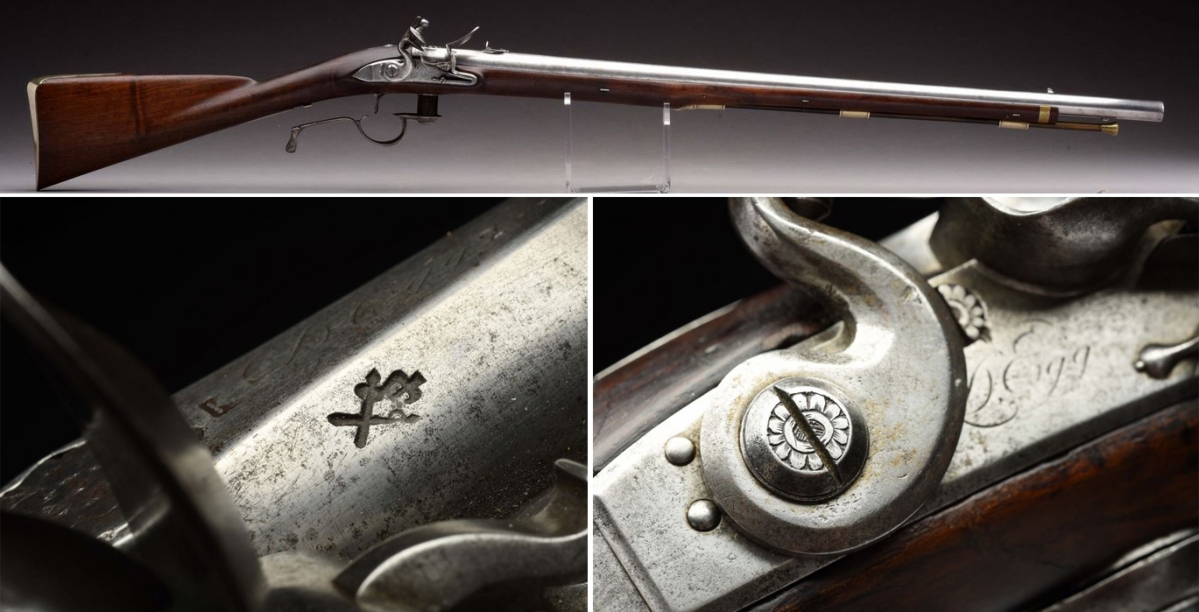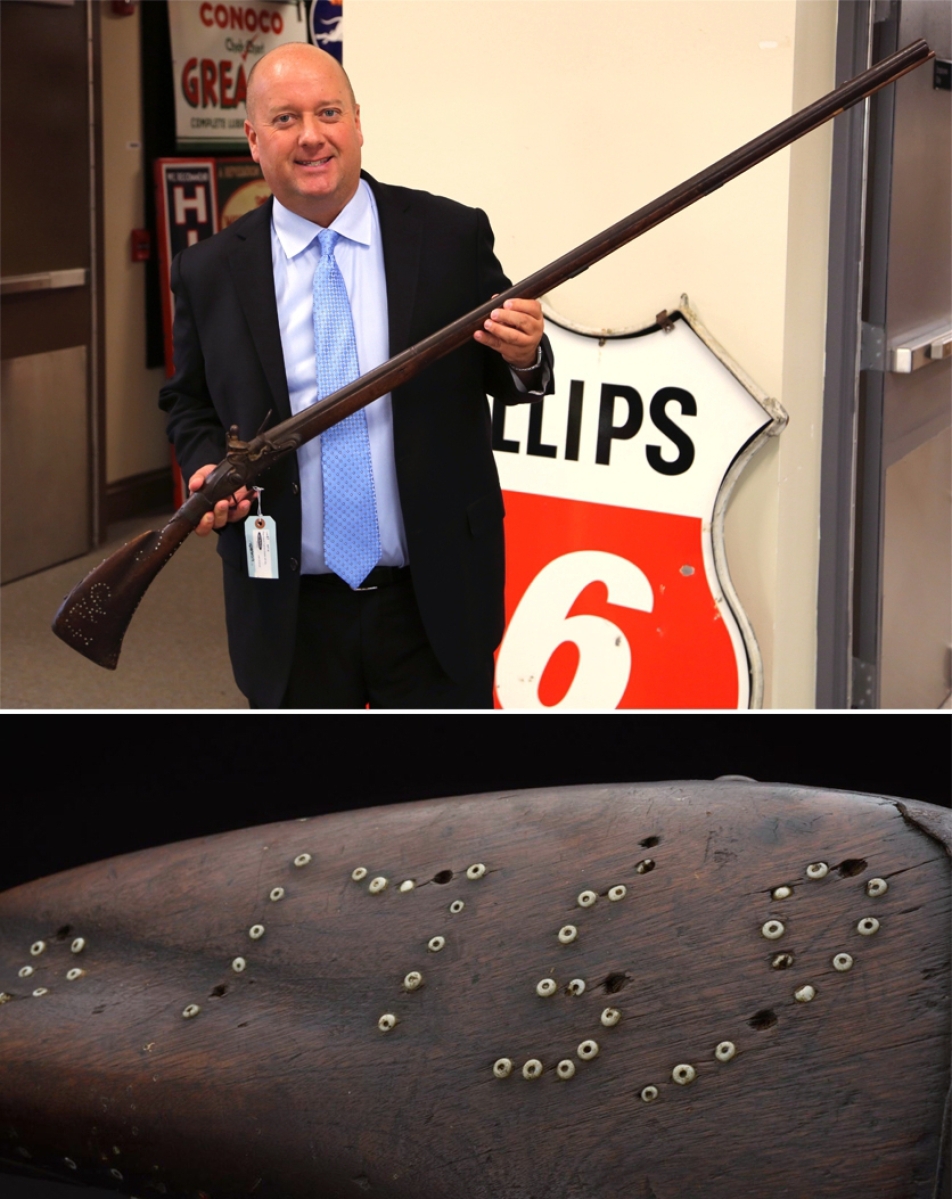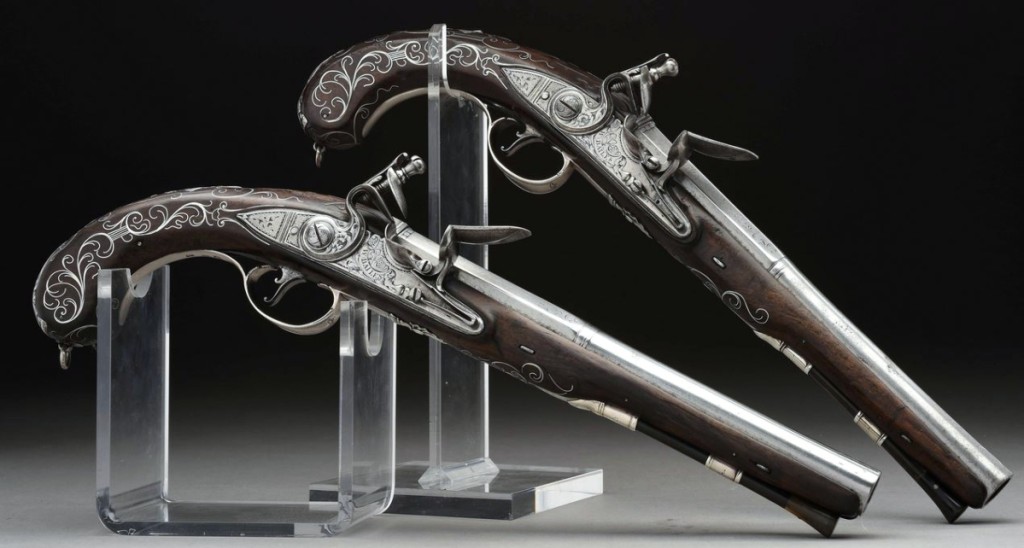
Items from Archibald Montgomerie, the 11th Earl of Eglinton, a Scottish General and a member of the British Parliament, saw interest. He was Clan Chief of the Clan Montgomerie and raised Montgomerie’s Highlanders, the 77th Regiment Of Foot, which fought with the British. A pair of the General’s silver-mounted flintlock pistols took $55,575.
Review and Photos by Greg Smith
DENVER, PENN. – Approximately 70 percent of the seating was reserved and occupied, the rest was filled in, and overflow chairs were offered around the edges for the sale of the lifetime historical Americana collection of well-known collector/dealer/historian Walter O’Connor at Morphy Auctions September 26. The focus of O’Connor’s collection was in the weapons, carved powder horns and written documents pertaining to the French and Indian War (1754-63), which is considered the North American theater of the worldwide Seven Years’ War.
O’Connor passed away January 25 of this year, leaving behind a vast collection of objects – many of which would fall into the “best” category – that he had been collecting since he was seven years old, when a family friend gifted him an 1842 Springfield musket carried by their ancestor in the Mexican-American War of 1846-48. In the foreword to the catalog, O’Connor then goes on to say that his next purchase came shortly thereafter, with the acquisition of 15 Nineteenth Century military weapons, firearms and edged weapons. He cut lawns to repay his father for the $25 loan.
O’Connor was involved in the field in a number of ways: consulting, researching, cataloging, advising, buying and selling and collecting. He built more than 75 percent of the collection of Colonial and Revolutionary War arms of the Valley Forge Historical Society from the 1950s-80s; he was involved in the sale of Metro Goldwyn Mayer Studios’ (MGM Studios) 1970 dispersion of its arsenal, some 700 firearms; he appraised, cataloged and later assisted in the 2007 sale of the Stembridge Arsenal, a vast collection of more than 7,000 arms that were used as props in many of the silver screen’s most famous western movies; and he cataloged other important collections, including the collection of John DuMont and the collection of the Fort Ticonderoga Association.
David Geiger, arms and armor specialist at Morphy Auctions, remembers O’Connor warmly. “I’ve known him since I was ten years old,” Geiger said. More than two decades later and after many hours spent looking over the objects together, Geiger cataloged O’Connor’s renowned powder horn and arms collection. “He had presented his collection to clients of mine who wanted to learn about powder horns,” Geiger said. “I know much of what I know today, especially about powder horns and other Eighteenth Century items, because of him. He came in to our office, and we had lunch every week.”
Walter O’Connor was well-known to collectors because of his attention to detail and his understanding of the market. He purchased correctly. Provenance being such a key aspect of historical Americana, O’Connor sought to buy from direct descendants whenever possible. This attention to detail was a confidence booster in bidders, which included institutions such as the Fort Pitt Museum and Fort Ligonier.
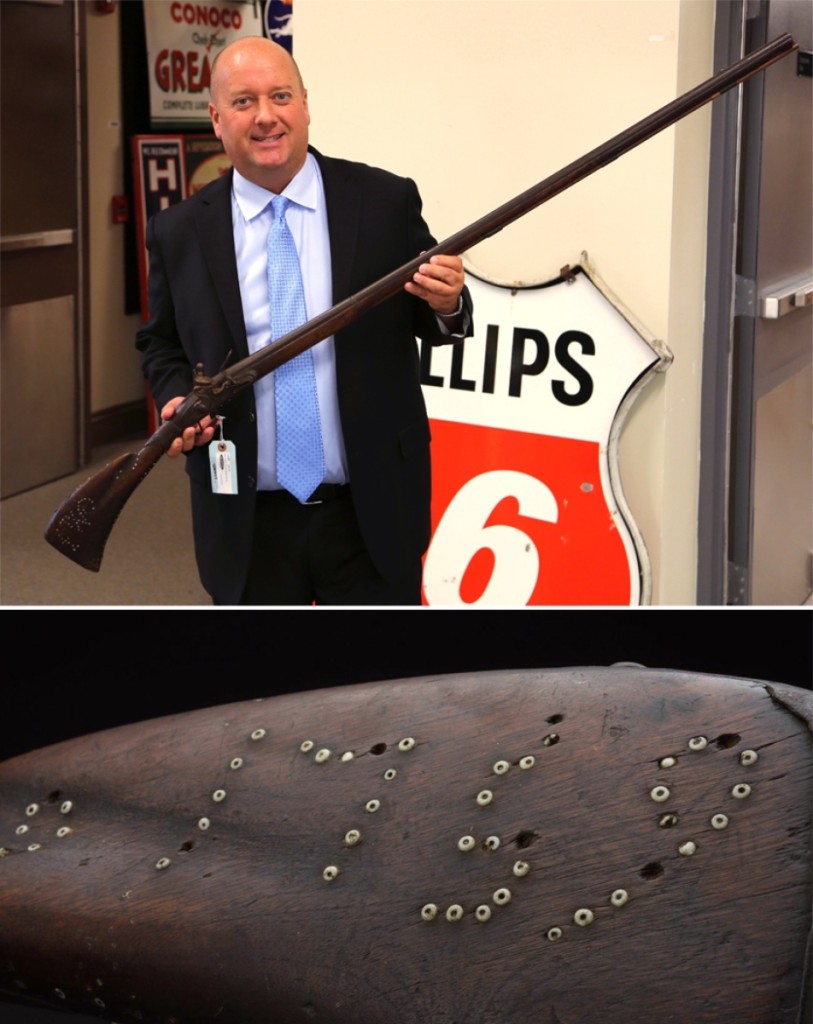
Dan Morphy, president and auctioneer, holds the top lot of the sale, a French Fusil de Chasse, which brought $102,000. It featured Wampum beads inlaid into the wood components with the initials IW and the year 1759. Specialist David Geiger said, “This is one of the best-known Indian beaded guns extant, with an early date on it. Authentic specimens that have Wampum beads are very rare.”
As Dan Morphy stood at the block and began his introduction to the sale, he said, “Walter was the ultimate collector – a unique individual who chased the best of the best. Out of the many stories of him and his dealings, there seems to be one common theme: not only was he enthusiastic and excited about his own findings, but he was excited about sharing the knowledge with other people. He would get as excited about looking at things other people owned as he did his own.”
As collectors and dealers watched on, a sale emerged that would go on to produce $2.5 million in total sales to 122 checked-in bidders.
At the top of the sale was a French Fusil de Chasse, a hunting musket rifle, which brought $102,000. Geiger said, “This is one of the best-known Indian beaded guns extant, with an early date on it. Authentic specimens that have Wampum beads are very rare.” O’Connor purchased it in the 1960s from an auctioneer in New Jersey. He believed it may have been brought home by a member of Captain Hezekiah Dunn’s New Jersey Ranging & Co after their service on the New York frontiers between 1756 and 1760. It featured Wampum beads inlaid into the wood components with the initials IW and the year 1759. It sold to an in-house bidder.
Right behind it at $96,000 was an important Ferguson breech loading flintlock pattern rifle No. 2 by Durs Egg. It is one of the two pattern Ferguson rifles supplied by the London gunmaker to the Board of Ordnance in 1776. Number 15 of the series resides in the collection of The Royal Armouries. Developed by Lieutenant Colonel Patrick Ferguson (1744-1780) of the British 70th Regiment and patented by him in December 1776, the catalog states that only 100 Ferguson rifles were made for military use during the Revolutionary War and only about 12 are known to exist today, with half of them in museum collections. The present example is illustrated in British Flintlock Military Rifles: 1740-1840 by De Witt Bailey, PhD, and is considered to be one of Ferguson’s personal rifles and one of two presented to the king for demonstration. Ferguson is storied as the man who had a bead on Washington at Brandywine but did not shoot, as the general’s back was turned. “He didn’t shoot because he was a gentleman,” Geiger said. “But as this was his personal rifle, it’s possible that this was the gun that had the bead on Washington.”
One of Geiger’s specialties is in Kentucky rifles, and of note in that category was an 1803 John Brady Lehigh percussion Kentucky rifle that featured something no other known Kentucky rifle is known to have: a map patchbox. Engraved on the brass patchbox was a map showing the waterways, villages and fortifications that were memorable in the life of John Brady Jr, including the Susquehanna River, Shamokin Creek, and several others. Featured on the gun’s sideplate was an Indian rowing a canoe. John Brady Jr was the fourth son of the famous noble Irishman Captain John Brady. The rifle went out at $30,000 to a bidder on the floor.
Approximately 58 lots, or 25 percent of the sale was devoted to O’Connor’s renowned collection of powder horns. “He was one of the world’s leading experts in powder horns,” Geiger said. “So much so that he even named the carvers, including the Master Carver. That was Walter’s term.”
Three powder horns brought $84,000 at the top of the collection. The first to cross the block was a Forbes Road map horn attributed to carver John Fox and belonging to John Cox. The profusely decorated horn was dated 1764 and featured more than 20 locations that spanned the journey from Philadelphia all the way to Niagara and Lake Ontario. In 1776, Cox rose to Lieutenant Colonel in the Second Battalion of the Pennsylvania Associated Militia. In 1792, the same year as his death, he sat for a portrait by Philadelphia artist William Peale.
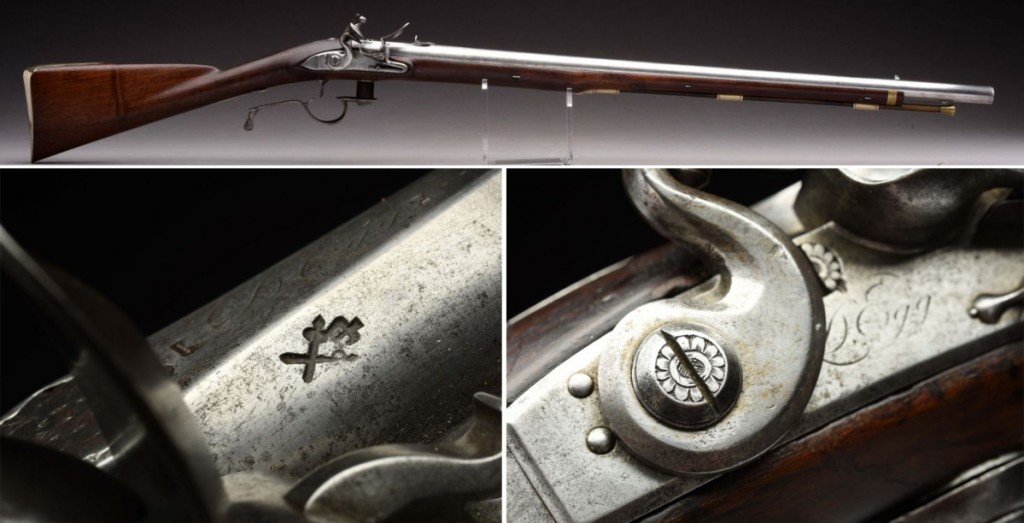
The second highest lot in the sale was this Ferguson breech loading flintlock pattern rifle No. 2 by Durs Egg, which went out at $96,000. The rifle was Ferguson’s personal weapon and was presented to the King of England for demonstration, bearing the stamp of the King’s proofs in the bottom left detail above. Only 100 Ferguson rifles were made, and only 12 are known to have survived. Ferguson is storied as the man who had a bead on Washington at Brandywine, but did not shoot, as the general’s back was turned. Geiger said that since this rifle is considered to be one of Ferguson’s personal rifles, it is possible that this was the rifle that had a bead on the future President.
At the same price was an engraved North Carolina map powder horn owned by Captain Chas. Richardes. The central engraving featured a view of Charlestown, S.C., with sporting weathervanes, cannons and a number of buildings. Also pictured is Fort Johnston flying a British Union Jack flag, other carvings of towns, forts, stags, fish, birds, an aggressive dog, a chained bear eyeing up a bird, a tulip and a compass. “It has excellent polychrome colors,” Geiger said, noting that the firm had sold another example by the same carver in a February sale for $96,000. The horn sold to a floor bidder.
The final horn at this price was a Fort Edward horn that belonged to Elijah Sharp, dated 1759. Fort Edward, originally Fort Lyman, was built four years prior to this horn’s engraving and served as a portage for boats looking to get around a section of rapids and falls on the Hudson River. The horn depicted a number of real and mythological animals, as well as a hunter shooting a fox which is chasing a goose. The horn was documented on February 25, 1888, by Rufus Grider, an early American object historian born in Lititz, Penn., who documented and drew images of “old and new and curious objects possessed by inhabitants” of the Mohawk Valley, producing a total of nine volumes of work.
Two horns from the only known African American horn engraver, John Bush, sold between their estimates. Interestingly, the horns were carved one day apart from one another at Fort William Henry. The horn of Ebenezer Knap, carved November 5, 1756, brought $42,000. Doing slightly better at $54,000 was the horn of Nicholas Currier, which was carved one day earlier on November 4, 1756. They represent two of the three John Bush horns in private hands. The catalog notes that according to Bill Guthman, Bush carved at least seven horns before he was captured by the French and Indians in 1757. An October 1758 article printed in the Boston Gazette notes that Bush and five other men were reported as “having died on board [of a prison ship] on passage to France.”
Another area of O’Connor’s focus was in the Highlanders, two regiments raised in Scotland to fight with the British in the French and Indian War. Lots from two Scottish soldiers who served in Montgomerie’s Highlanders, the 77th Regiment of Foot, saw competitive bidding. At the top was a flintlock pistol and a basket-hilted backsword, which were both used by Ensign (later Captain) James Grant at the Battle of Bushy Run. That lot was the third highest in the sale at $90,000. Three lots of Grant ephemera followed, including military records and correspondence kept by, made for or sent to James Grant during his service in the French and Indian War ($9,600), a group of 21 papers relating to Pontiac’s Conspiracy and the battle of Bushy Run ($20,400) and Grant’s family records in New York ($4,200). Two lots from the leader of Montgomerie’s Highlanders, Archibald Montgomerie, saw interest, though neither went as high as Grant’s top lot. A pair of the General’s silver-mounted flintlock pistols took $55,575, while his flintlock fowler rifle brought $11,685.
Finishing at $39,975 was a pair of silver-mounted flintlock pistols owned by two Revolutionary War heroes. The pistols were originally held by Captain Patrick Carr, who later presented them to General “Mad” Anthony Wayne as they served together at the end of 1781 in Georgia, following the Battle of Yorktown. Carr was infamous for his Tory bloodthirst, reputed to have killed 100 Loyalists with his bare hands. Upon return from King’s Mountain, the catalog notes that Carr and a band of backwoodsmen captured nine Tories and hung them on the spot. Carr said, “he wished that all the trees in the forest could bear such beautiful fruit!” O’Connor acquired the pair by way of Sotheby’s Parke-Bernet from the descendants of General Anthony Wayne.

A Fort Edward horn that belonged to Elijah Sharp, dated 1759, brought $84,000. Fort Edward, originally Fort Lyman, was built four years prior to this horn’s engraving and served as a portage for boats looking to get around a section of rapids and falls on the Hudson River.
Approximately 20 lots in the sale had provenance to Hollywood studios, many of them displayed during preview with a picture of a famous movie star holding the weapon. At the top of the category was a golden age flintlock Kentucky rifle by John Fondersmith, used by Fess Parker in the 1950s television series Davy Crockett and the TV film Daniel Boone, as well as being carried by other actors in John Wayne’s The Fighting Kentuckian (1949) and in The Iroquois Trail (1950). The rifle had been purchased from Stembridge Movie Rental by O’Connor and came with a signed publicity image of Fess Parker holding the rifle. At $21,600 was a pair of pistols made by Andreas Kuchenreiter of Regensburg, Bavaria, which were used by actor Gary Cooper as Christopher Holden in Cecil B. DeMille’s production of Unconquered (1947). From the same movie and held by the same actor was a swivel-barreled flintlock rifle made by John George Flittner of Carlsruhe in Saxony, which went out at $20,400. Not far behind was a 1787 Kentucky longrifle by Adam Angstadt and used by John Wayne in Allegheny Uprising (1939) and The Fighting Kentuckian (1949). That rifle took $19,680.
No historical sale would be complete without signed documents and correspondence. For this, Morphy tapped James Kochan to catalog the section.
“I had never seen his manuscript collection,” Kochan said before the sale got underway. “It was a real pleasure cataloging it. There is some good Revolutionary War material in there, but the focus is in the French and Indian War. Walter was very interested in Pennsylvania frontier history.”
Leading this group at $84,000 was Francis Pfister’s set of folding maps of the Hudson River corridor – from St Johns, Quebec, to New York City, dated 1758. Pfister was a German serving in the British army and a trained cartographer. The three-piece map was taken from his saddlebags following his death at the battle of Bennington, along with his commission, papers and a set of drawing instruments, by Jonathan Armstrong, a Patriot volunteer from Dorset involved in the attack on the Tory Redoubt. According to records, the loot was still in the possession of Armstrong’s grandson in 1860, who recorded “a map of the rout from St Johns through lakes Champlain and George and along the Hudson to New York in three parts for the convenience of folding and use, the whole being about 4 feet long by 10 inches wide.” The map came with its original map case and a brass compass from Pfister’s drafting set. Also included in the sale was Pfister’s 1760 commission as lieutenant, a promotion from Ensign, which brought $5,700.
“This is one of only two extant commissions for a ranger in Rogers’ Rangers,” Geiger said of a 1757 commission promoting Charles Bulkeley to Captain. That lot brought $58,424 and had been purchased by O’Connor from Bulkeley’s descendants. Other pieces from Rogers’ Rangers also found interest. At $48,000 was the powder horn of Captain Edmund Munro, dated 1758, who was a Ranger and Lexington veteran. A letter from Robert Rogers as governor of Michilimackinac to Sir William Johnson reporting on Western Indian affairs, the first autographed letter signed by Rogers to appear at auction since 1949, saw considerable interest to $33,600. In possibly the first letter detailing Indian affairs to Johnson, Rogers describes a calm scene, saying, “The Indians are mostly gone to their Wintering in good Temper & well Satisfied.” The catalog notes that the letter occurred “at a point in time when it appeared that the world was his oyster, just before a series of events that would ruin him.” Which leads us to the next lot, an unpublished letter from Lieutenant Christie to Sir William Johnson, which provided new details on the captivity and actions of Robert Rogers after he was falsely accused of treason and confined at Michilimackinac. That document sold for $19,200.
Following up after the sale, Geiger was pleased with the results. “I think it performed very well,” he said. “It did a half million over the high estimate. The attendance in the gallery was very strong; that doesn’t happen very often. I was glad to see that the interest in this time period is high.”
For information, www.morphyauctions.com or 877-968-8880.

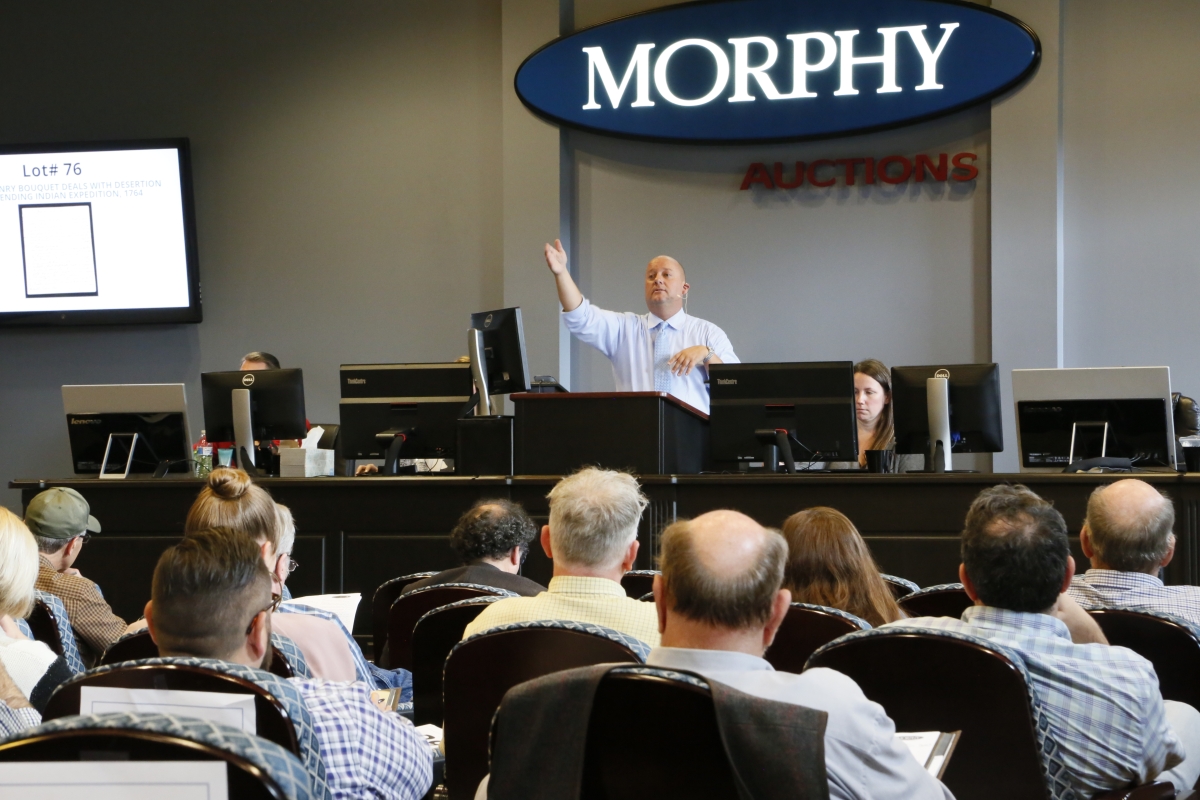


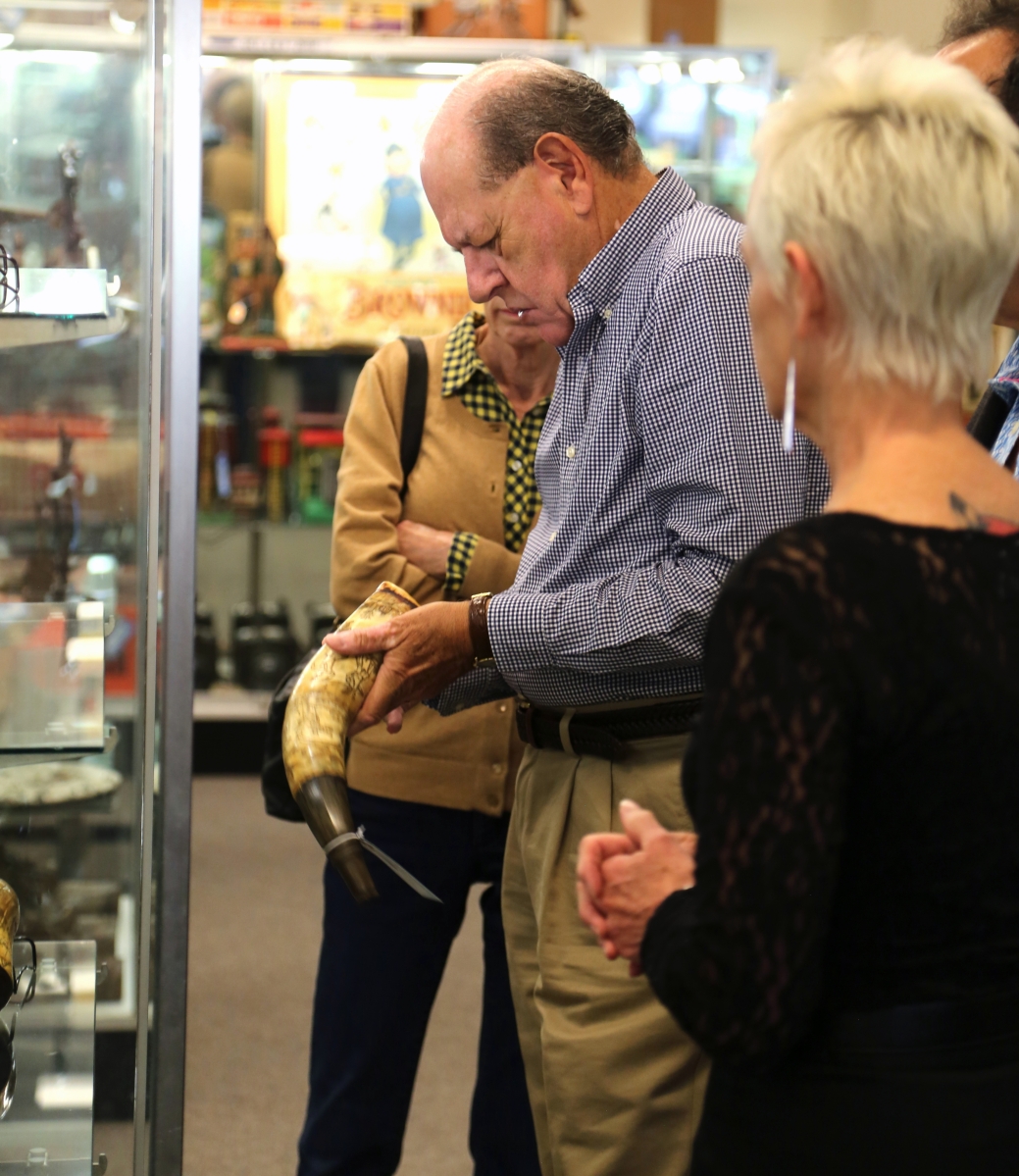
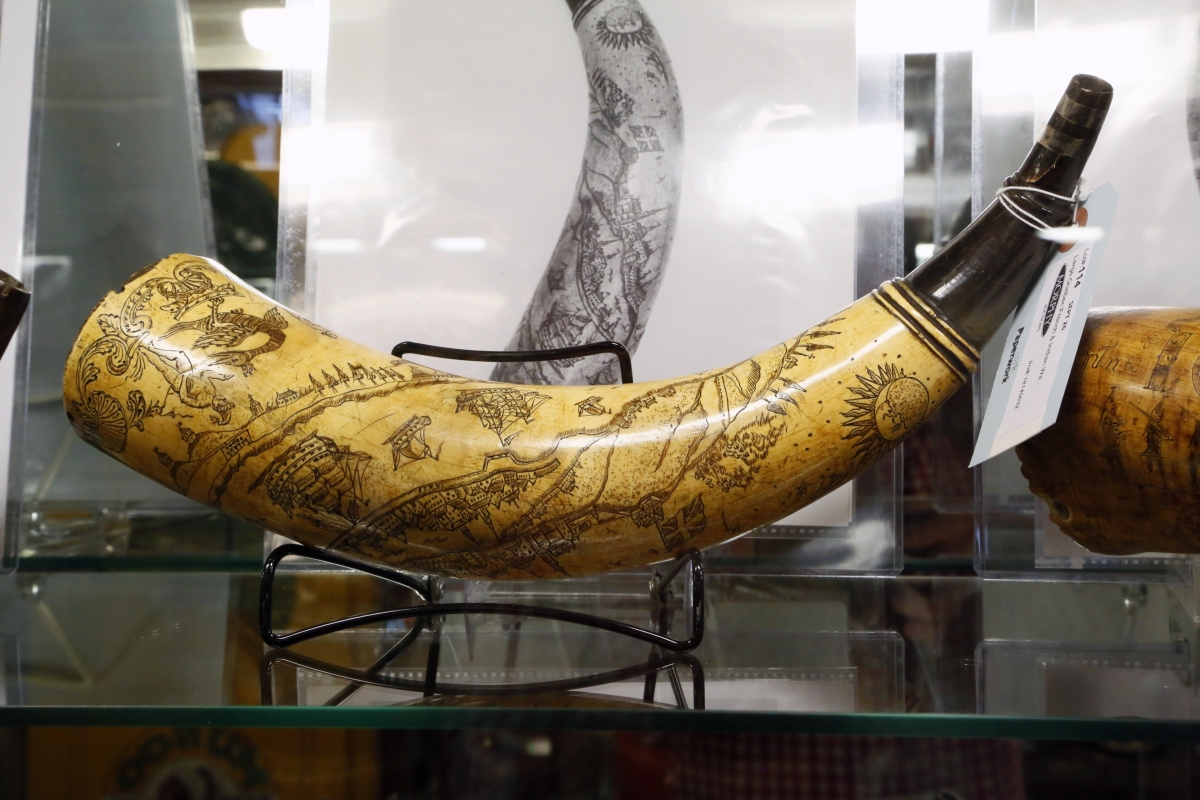
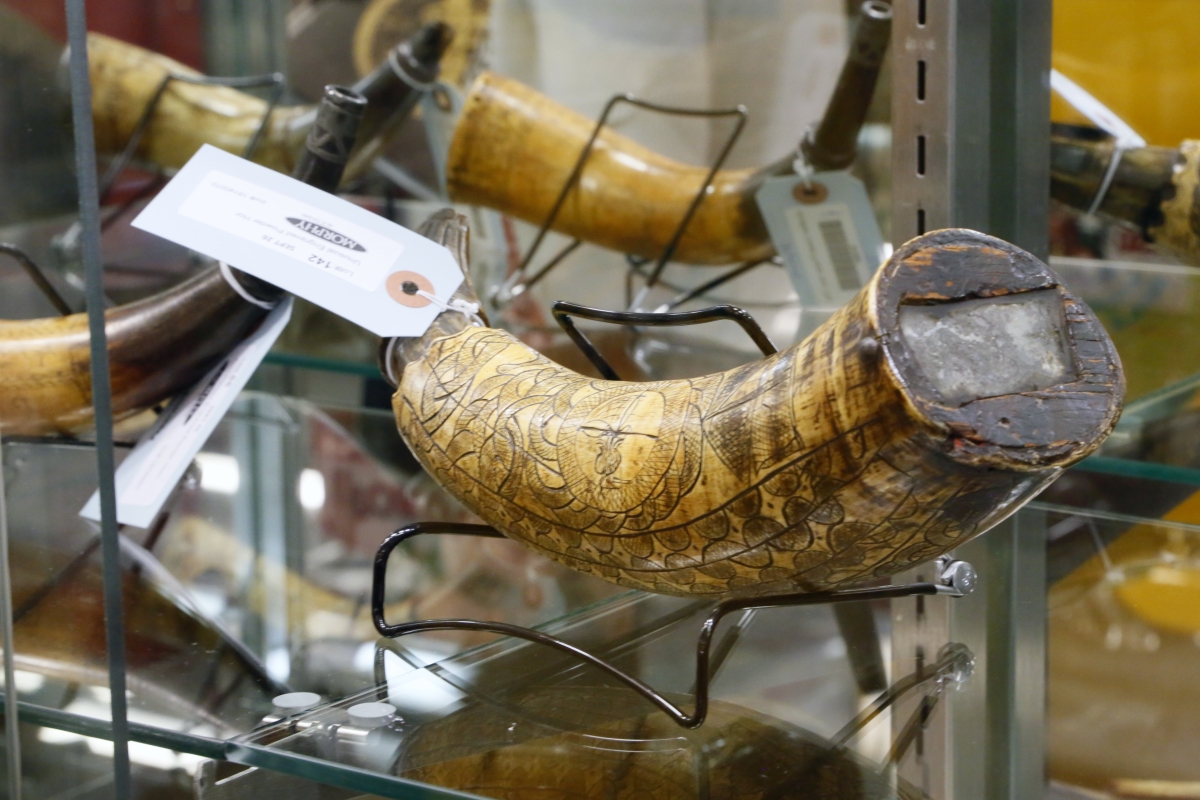
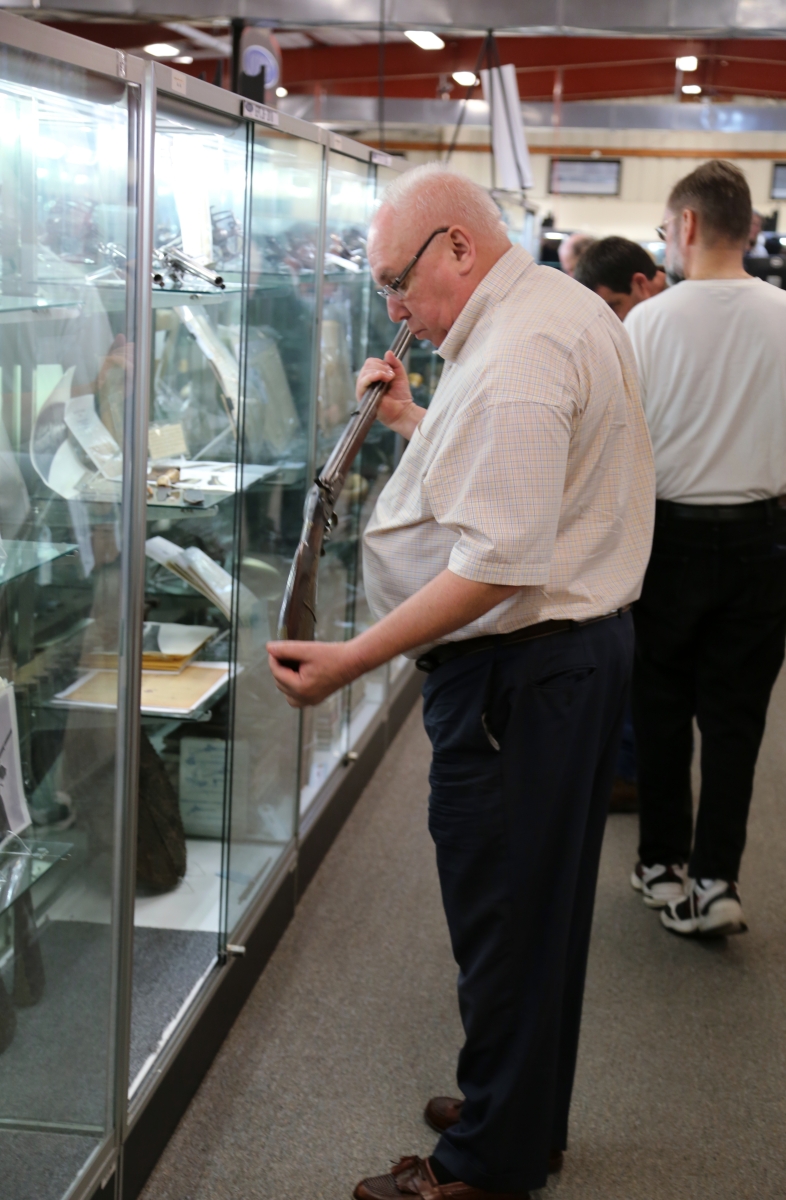
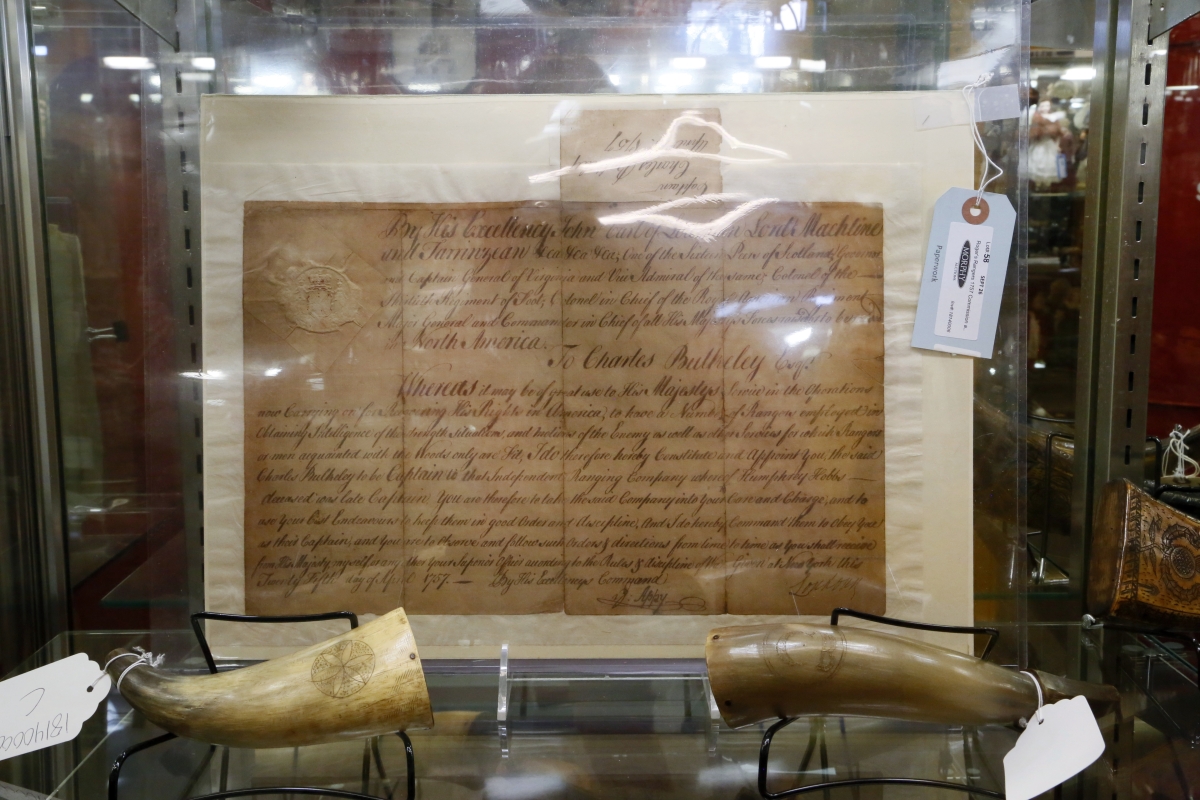





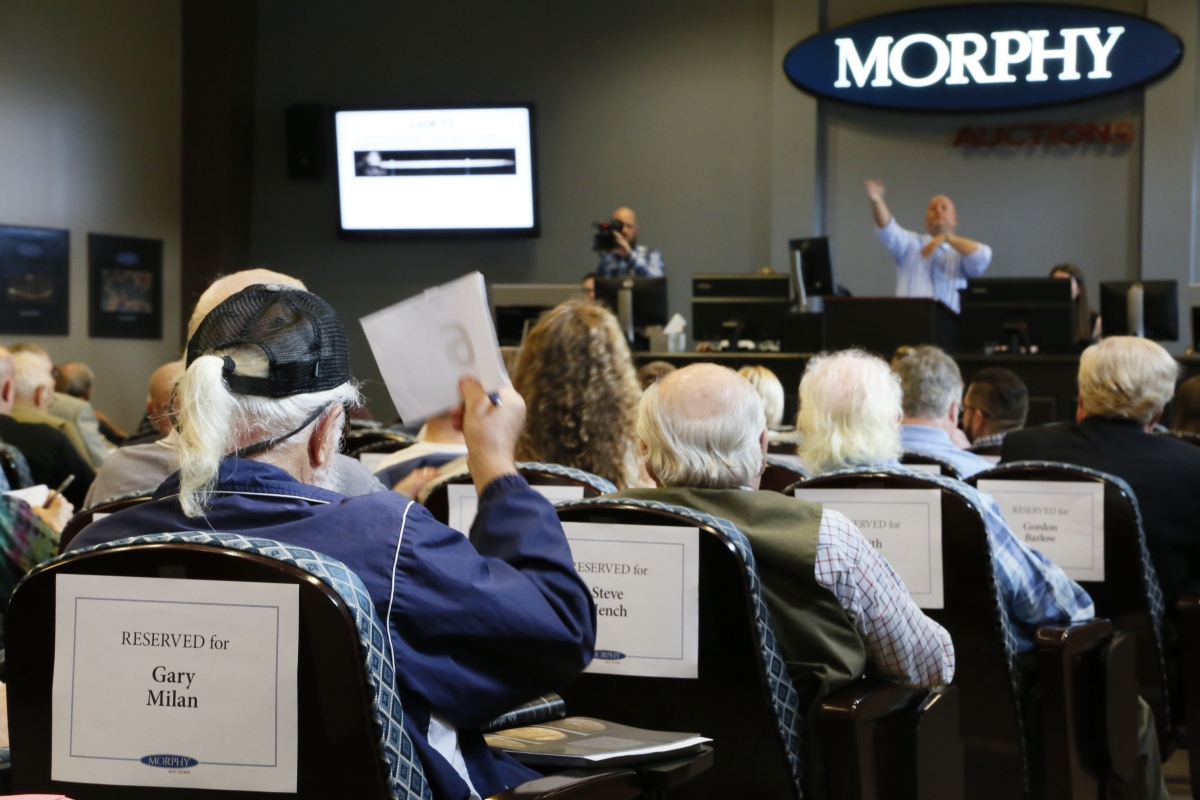



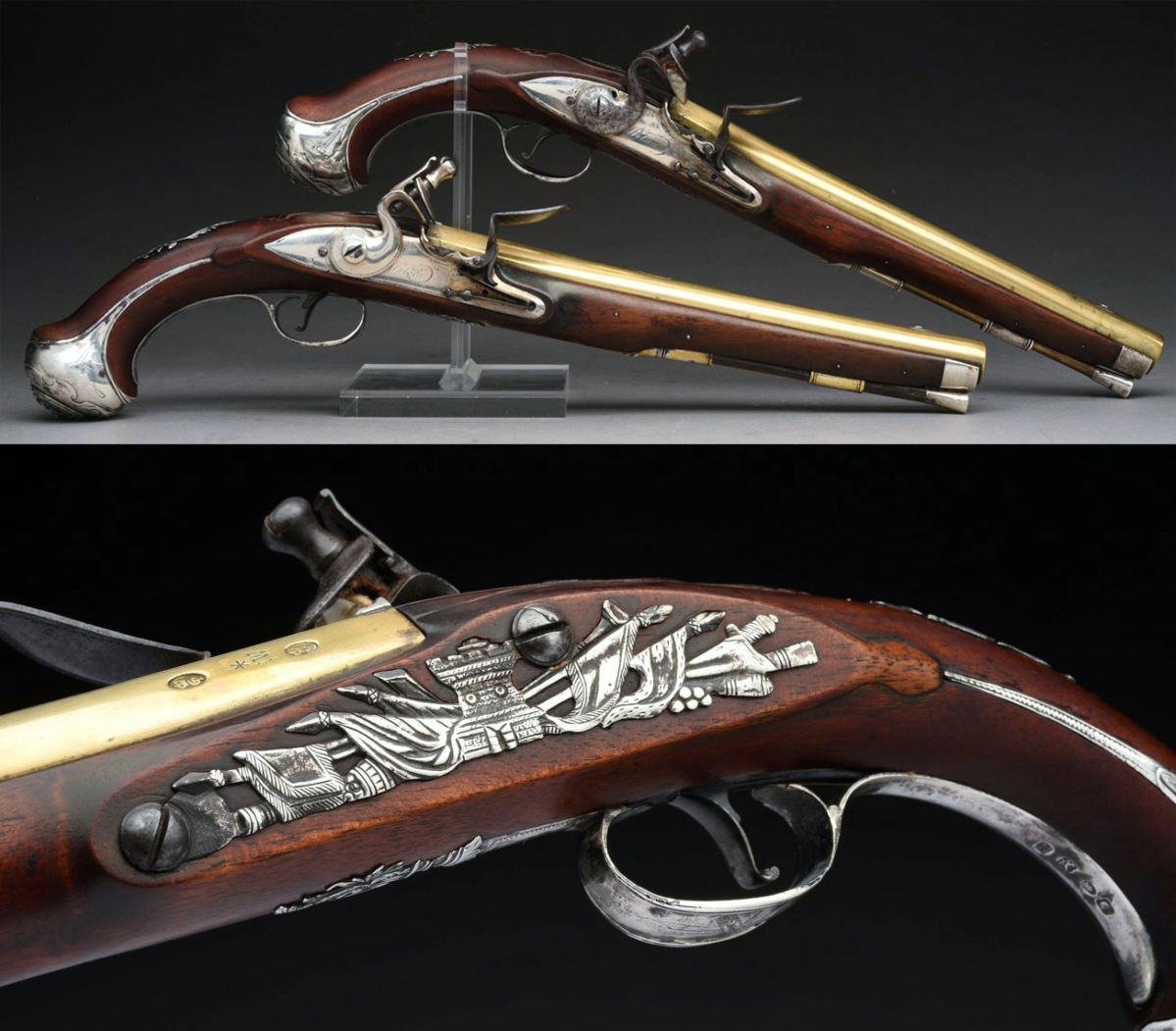


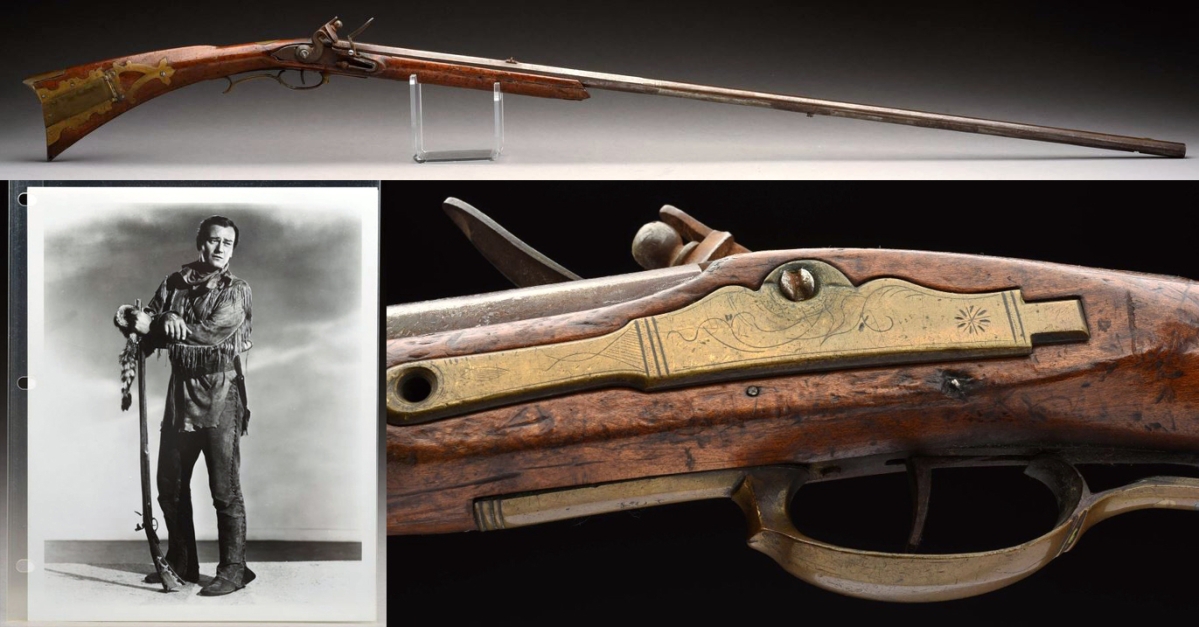
.jpg)
